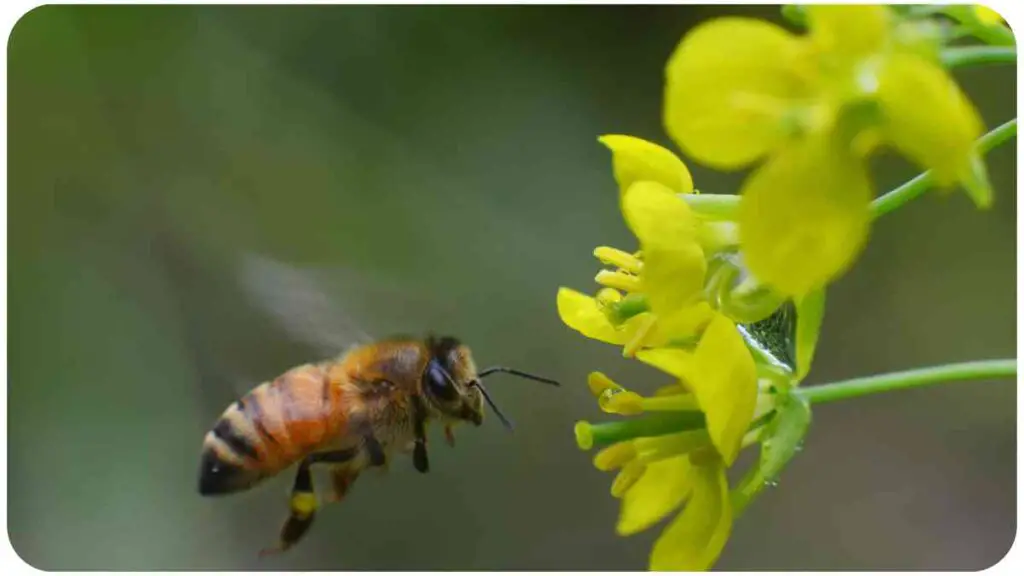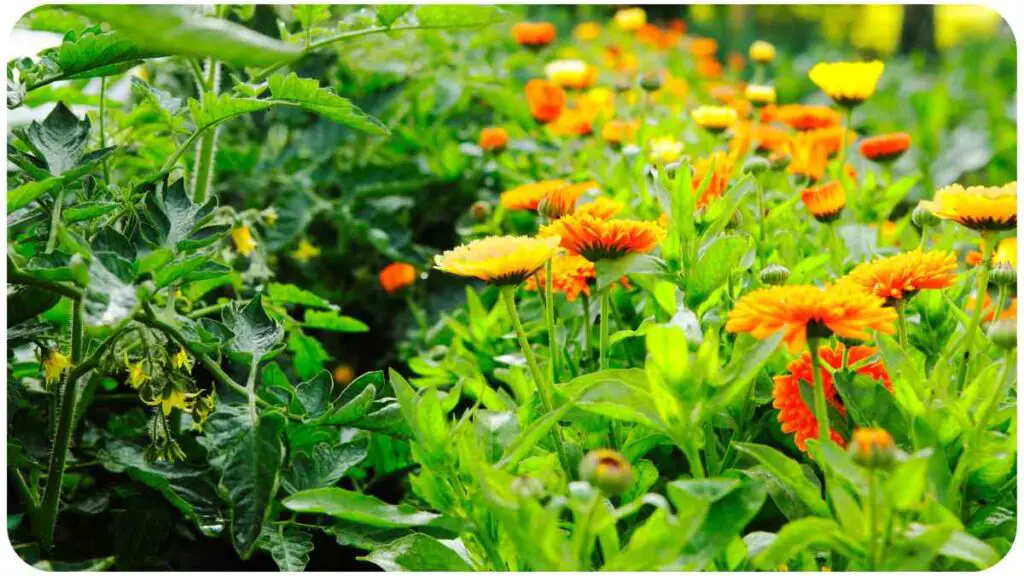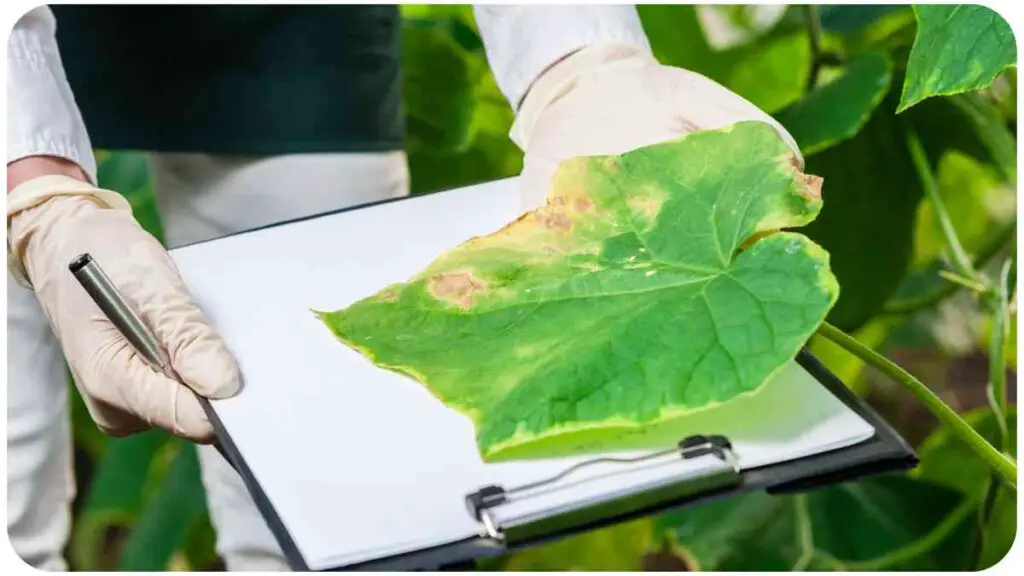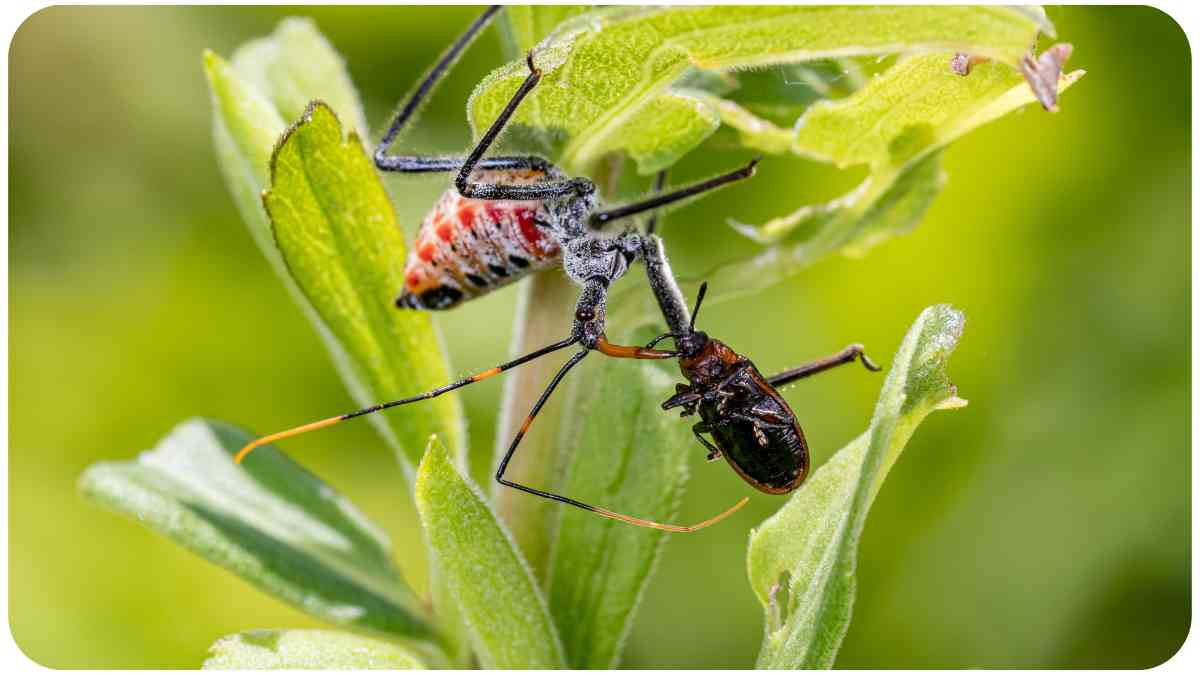Are you tired of battling garden pests and constantly worrying about the health of your plants? What if I told you that nature has its own way of maintaining balance in your garden? Inviting beneficial insects into your ecological garden design can be a game-changer.
Not only do these insects help control pests, but they also contribute to the overall health and biodiversity of your garden. In this article, we’ll dive deep into how you can create a haven for these helpful creatures and turn your garden into a thriving ecosystem.
| Takeaways |
|---|
| Creating a diverse garden attracts a variety of beneficial insects. |
| Provide shallow water sources and shelter to support insect populations. |
| Companion planting can improve plant health and attract beneficial insects. |
| Avoid chemical pesticides to protect beneficial insect populations. |
| Use organic fertilizers to enhance soil health and support garden ecology. |
| Monitor your garden regularly to maintain a balanced ecosystem. |
| Specific plants like dill, fennel, and marigolds attract key beneficial insects. |
| Engage with local gardening groups for support and shared knowledge. |
| Sustainable practices ensure long-term garden health and ecological balance. |
| Resources such as books and websites can provide further learning. |
Understanding Beneficial Insects

Definition and Roles
Beneficial insects are those that perform valuable services in your garden. They can be pollinators, predators of pests, or decomposers. These insects play a crucial role in maintaining the ecological balance. By encouraging their presence, you can reduce the need for chemical interventions and promote a healthier garden environment.
Invite the buzz of life to your garden with diverse beneficial insects that nurture your plants naturally. Embrace ecological balance and watch your garden flourish.
Common Beneficial Insects
- Ladybugs: Known for their voracious appetite for aphids and other soft-bodied pests.
- Bees: Essential pollinators for many plants and flowers.
- Lacewings: Their larvae feed on a wide variety of pest insects.
- Predatory Wasps: Hunt and paralyze pest insects to feed their young.
- Ground Beetles: Prey on soil-dwelling pests like slugs and snails.
Table: Common Beneficial Insects and Their Roles
| Beneficial Insect | Role in the Garden |
|---|---|
| Ladybugs | Control aphids and soft-bodied pests |
| Bees | Pollination |
| Lacewings | Pest control (larvae feed on pests) |
| Predatory Wasps | Hunt pest insects |
| Ground Beetles | Prey on soil-dwelling pests |
Planning Your Ecological Garden
Site Selection and Preparation
Choosing the right location for your garden is crucial. Look for a sunny spot with well-drained soil. Prepare the site by removing weeds and incorporating organic matter to improve soil health. A well-prepared garden bed will provide a strong foundation for attracting beneficial insects.
Transform your outdoor space into a tranquil haven by integrating water features that soothe the senses and elevate ambiance. Let the gentle flow of water create a serene oasis in your backyard.
Choosing Native Plants
Native plants are adapted to your local environment and are more likely to thrive without the need for excessive care. They also attract a wide variety of local beneficial insects. By incorporating a mix of native flowering plants, grasses, and shrubs, you create a diverse habitat that supports insect life.
Table: Native Plants and the Beneficial Insects They Attract
| Native Plant | Attracted Beneficial Insect |
|---|---|
| Milkweed | Monarch butterflies |
| Coneflower | Bees and butterflies |
| Goldenrod | Predatory wasps and ladybugs |
| Aster | Bees and predatory insects |
| Joe-Pye Weed | Butterflies and pollinators |
Creating a Habitat for Beneficial Insects
Diversity in Planting
A diverse garden attracts a variety of beneficial insects. Planting a mix of flowers, herbs, and vegetables can create a rich ecosystem. Diversity ensures that different beneficial insects have access to the resources they need throughout the growing season. Think of it as providing a buffet with something for everyone!
Water Sources and Shelter
Just like us, insects need water and shelter. Include shallow water sources like birdbaths or small ponds. Ensure that these water sources have rocks or shallow edges so that insects can safely drink. Shelter can be provided by incorporating features like logs, rocks, and leaf litter into your garden. These elements offer hiding places and overwintering sites for insects.
Table: Features to Include in Your Garden for Beneficial Insects
| Feature | Benefits |
|---|---|
| Birdbaths | Provides water for drinking |
| Small Ponds | Habitat for aquatic insects and drinking source |
| Logs and Rocks | Shelter and overwintering sites |
| Leaf Litter | Habitat for ground-dwelling insects |
| Mulch | Maintains soil moisture and habitat |
Companion Planting for Insect Attraction

Benefits of Companion Planting
Companion planting involves growing different plants together to enhance growth and repel pests. This method can attract beneficial insects, improve plant health, and increase yields. It’s like creating a community where each member supports the other.
Open your door to the calming embrace of nature with tips on bringing serenity to your doorstep. Embrace the beauty of outdoor living and reconnect with the tranquility of the natural world.
Effective Plant Combinations
Certain plant combinations are particularly effective at attracting beneficial insects. For example, planting marigolds near tomatoes can repel nematodes and attract predatory insects. Similarly, dill and fennel can attract lacewings and ladybugs.
Table: Companion Plants and Their Attracted Insects
| Companion Plants | Attracted Beneficial Insect |
|---|---|
| Marigold & Tomato | Predatory insects (e.g., ladybugs) |
| Dill & Fennel | Lacewings, ladybugs |
| Basil & Pepper | Bees, predatory wasps |
| Nasturtium & Cabbage | Aphid predators (e.g., hoverflies) |
| Borage & Strawberries | Pollinators (e.g., bees) |
Organic Practices to Support Beneficial Insects
Avoiding Pesticides
Pesticides can harm beneficial insects as well as pests. By avoiding chemical pesticides, you allow beneficial insect populations to thrive. Use natural alternatives like neem oil or insecticidal soap if necessary. Remember, a healthy garden doesn’t need harsh chemicals to flourish.
Using Organic Fertilizers
Organic fertilizers support soil health and provide nutrients for plants without the harmful side effects of synthetic products. Compost, manure, and organic plant food are excellent choices. Healthy soil is the cornerstone of a thriving garden ecosystem.
Table: Organic Fertilizers and Their Benefits
| Organic Fertilizer | Benefits |
|---|---|
| Compost | Improves soil structure and fertility |
| Manure | Provides essential nutrients |
| Bone Meal | Adds phosphorus for root development |
| Fish Emulsion | Provides quick-release nutrients |
| Green Manure | Adds organic matter and nitrogen |
Managing Pests with Beneficial Insects
Natural Pest Control Methods
Beneficial insects are nature’s pest control agents. Encouraging their presence can reduce the need for chemical interventions. For instance, introducing ladybugs can help control aphid populations, while predatory wasps can target caterpillars.
Escape the chaos of urban life and find solace in serene backyard sanctuaries designed for relaxation and rejuvenation. Create a peaceful retreat where you can unwind and recharge amidst lush greenery.
Case Studies and Success Stories
Many gardeners have successfully managed pests by fostering beneficial insects. For example, Jane, a home gardener in California, reported a significant reduction in aphid infestations after planting dill and attracting lacewings. Similarly, a community garden in New York saw improved plant health and yield after introducing predatory beetles to combat slugs.
Table: Pest Problems and Beneficial Insect Solutions
| Pest Problem | Beneficial Insect Solution |
|---|---|
| Aphids | Ladybugs, lacewings |
| Caterpillars | Predatory wasps, ground beetles |
| Slugs | Ground beetles |
| Whiteflies | Parasitic wasps, lacewings |
| Spider Mites | Predatory mites, ladybugs |
Monitoring and Maintaining Your Garden

Regular Monitoring Tips
Keep an eye on your garden regularly to spot any issues early. Look for signs of pest activity and check the health of your plants. Monitoring helps you take quick action if problems arise and ensures that your garden remains a hospitable environment for beneficial insects.
Seasonal Maintenance Practices
Different seasons require different maintenance practices. In spring, focus on planting and preparing your garden. Summer is the time for monitoring and managing pests. Fall involves cleaning up and preparing for winter. Each season brings unique tasks that keep your garden thriving year-round.
Discover the perfect spot for relaxation and reflection with cozy outdoor nooks designed for comfort and tranquility. Surround yourself with nature’s beauty and immerse yourself in moments of peaceful contemplation.
Attracting Specific Beneficial Insects
Ladybugs
Ladybugs are excellent for controlling aphids. Planting dill, fennel, and yarrow can attract them to your garden. They are also attracted to brightly colored flowers and herbs.
Bees and Butterflies
To attract bees and butterflies, plant a variety of flowering plants like lavender, sunflowers, and coneflowers. These pollinators are essential for fruit and vegetable production.
Predatory Wasps
Predatory wasps help control caterpillar and beetle populations. Planting goldenrod, Queen Anne’s lace, and sweet alyssum can attract these beneficial insects.
Table: Specific Plants for Attracting Target Insects
| Target Insect | Attracting Plants |
|---|---|
| Ladybugs | Dill, fennel, yarrow |
| Bees | Lavender, sunflowers, coneflowers |
| Butterflies | Milkweed, butterfly bush, zinnias |
| Predatory Wasps | Goldenrod, Queen Anne’s lace, sweet alyssum |
| Hoverflies | Marigold, nasturtium, cosmos |
Educational and Aesthetic Benefits
Learning Opportunities
Gardening with beneficial insects can be a wonderful educational experience. It provides an opportunity to learn about ecosystems, biology, and the intricate relationships between plants and insects. For children and adults alike, watching these beneficial insects at work can be both fascinating and informative.
Enhancing Garden Beauty
Beneficial insects can also add to the beauty of your garden. Butterflies and bees bring vibrant colors and activity, making your garden a lively and engaging space. The presence of these insects often indicates a healthy and thriving garden.
Challenges and Solutions
Common Issues and Fixes
Even the best-laid plans can encounter problems. Sometimes, beneficial insect populations might not establish as quickly as hoped. In such cases, be patient and continue to provide a hospitable environment. Another common issue is the inadvertent attraction of pests. Regular monitoring and using organic practices can help mitigate this.
Expert Advice
Many gardening experts, like Jessica Walliser, author of “Attracting Beneficial Bugs to Your Garden,” recommend starting with a few key plants and expanding as you become more comfortable. She emphasizes the importance of patience and consistency in creating a balanced garden ecosystem.
Community and Resources
Local Gardening Groups
Joining a local gardening group can provide support and shared knowledge. These communities often have experienced gardeners who can offer advice and share their experiences with beneficial insects. Participating in community gardening events can also help you learn new techniques and strategies.
Recommended Books and Websites
To deepen your understanding, consider reading books and visiting websites dedicated to ecological gardening and beneficial insects. Some highly recommended resources include:
- “Attracting Beneficial Bugs to Your Garden” by Jessica Walliser
- “The Organic Gardener’s Handbook of Natural Pest and Disease Control” by Fern Marshall Bradley
- Xerces Society for information on pollinator conservation
Table: Resources for Further Learning
| Resource | Description |
|---|---|
| “Attracting Beneficial Bugs to Your Garden” | Book by Jessica Walliser on attracting beneficial insects |
| “The Organic Gardener’s Handbook of Natural Pest and Disease Control” | Comprehensive guide on organic pest control |
| Xerces Society | Nonprofit organization focused on pollinator conservation |
| Local Gardening Groups | Community support and shared knowledge |
| Online Gardening Forums | Forums for advice and experience sharing |
Sustainability and Long-Term Planning
Eco-Friendly Gardening Practices
Sustainable gardening practices are essential for long-term success. These include composting, using rainwater for irrigation, and choosing plants that are suited to your local climate. By implementing these practices, you can create a garden that is both beautiful and environmentally friendly.
Planning for Future Generations
When designing your garden, think long-term. Consider how your choices will impact future generations. Planting perennials, using organic methods, and fostering a diverse ecosystem are all ways to ensure your garden continues to thrive for years to come.
Conclusion
Creating a garden that invites beneficial insects is a rewarding endeavor. It not only helps control pests but also promotes a healthy and diverse ecosystem. By understanding which plants attract beneficial insects, avoiding harmful chemicals, and providing necessary resources like water and shelter, you can transform your garden into a thriving sanctuary for these helpful creatures. Start small, be patient, and enjoy the process of watching your garden come to life with the buzz and flutter of beneficial insects.
Further Reading
For more in-depth information on attracting beneficial insects to your garden, check out these excellent resources:
- Kew Gardens: How to Attract Insects to Your Garden: Discover practical tips and advice on making your garden a haven for beneficial insects.
- Garden Design: Beneficial Insects: Learn about the types of beneficial insects and how to create an environment that attracts them.
- University of California Agriculture and Natural Resources Blog: Explore insights and research findings on promoting beneficial insects in your garden.
FAQs
What are beneficial insects?
Beneficial insects are those that provide valuable services to gardens, such as pollination and pest control. Examples include ladybugs, bees, and lacewings.
How can I attract beneficial insects to my garden?
You can attract beneficial insects by planting a variety of native plants, providing water sources, and avoiding chemical pesticides. Creating diverse habitats and companion planting are also effective strategies.
Why should I avoid using chemical pesticides?
Chemical pesticides can harm beneficial insects along with pests. By avoiding these chemicals, you allow beneficial insect populations to thrive and naturally control pest populations.
What types of plants attract beneficial insects?
Native plants, flowering herbs, and a mix of annuals and perennials are great for attracting beneficial insects. Examples include milkweed, coneflowers, and dill.
How do beneficial insects help with pest control?
Beneficial insects help control pest populations by preying on them. For example, ladybugs eat aphids, and predatory wasps hunt caterpillars. This natural pest control reduces the need for chemical interventions.

For 15 years, Hellen James has worked in the gardening industry as an expert and landscape designer. During her career, she has worked for a variety of businesses that specialize in landscaping and gardening from small firms to large corporations.

